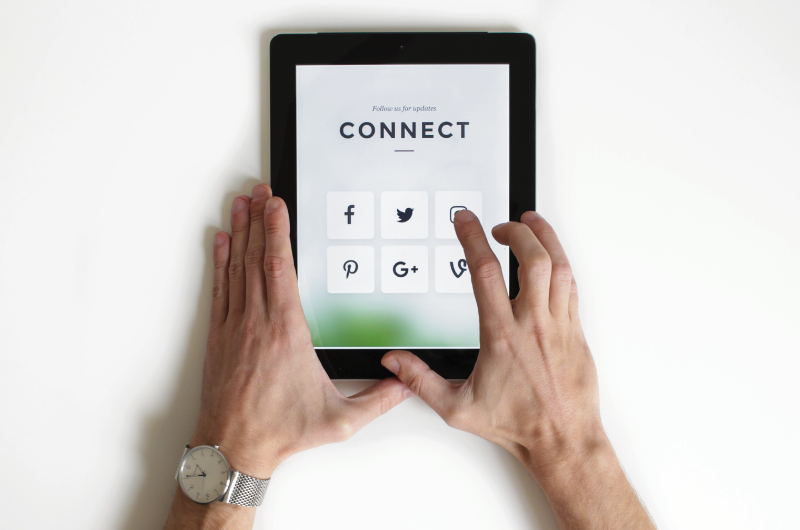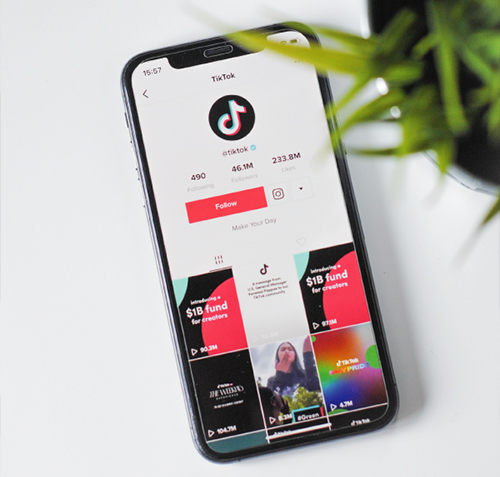Which Social Media Platform Should My Business Use?
The Best Social Media Platform for Your Business
We get this one a lot. The answer isn’t as clear-cut as one might think. If only it were that easy. There are plenty of social media sites and apps, but they may not be right for your business. Social media is an investment, so it’s important to consider which platform will bring the most value. It can be one of your most profitable marketing channels, but it could end up being one of your most draining without taking advantage of the right outlets.
Not every platform is a good fit for every business, and the best one depends on your goals and offerings. Every social media platform has nuances that make it useful for some but a waste for others. There is a right and wrong social media platform for your business. You just need to find out which will work best for you.


Facebook has had a firm grip on the social media world since 2004. And although they may not be the newest and trendiest option out there, it remains the most used social media platform worldwide. Each month, the site has 2.7 billion active users. Its massive size makes it a safe bet for most B2C businesses, including retail stores, restaurants, and even nonprofits. B2Bs often do well on Facebook too, but they may not see as many engagements as their B2C counterparts.
Ultimately, your ideal audience is probably using Facebook unless they are young millennials or a part of Gen Z. Membership for this age group drops by about five percent each year. However, the platform has seen a notable increase in the 55 and older crowd, partially due to its changing algorithm.
Over the years, Facebook’s algorithm has limited the amount of News Feed content shown by business pages in favor of posts by family and friends. This change has made the platform more competitive, pushing businesses toward paid advertising campaigns. For many companies, Facebook has become a “Pay to Play” social media environment. Depending on your industry, your engagement may hinge on a paid ads.
Pros:
- Easy to get started
- Massive potential reach
- Built-in analytics
Cons:
- Some ads require a large budget
- Limiting algorithm
- Hit or miss customer support

Instagram is undoubtedly the most visual of all the social platforms. It also happens to be one of our favorite options because of its flexibility. It started as a photo-based social media platform but has since expanded its features to include temporary stories like Snapchat, short Reels like TikTok, and long-form videos like YouTube.
We think of Instagram as a brand-building platform. With its lineup of options, you can create a wide variety of visual content. That being said, Instagram is for businesses that have strong visuals. Think restaurants, retail stores, creative companies, and event venues. But don’t be discouraged by that. There are plenty of other industries that have found success on Instagram.
Facebook owns Instagram, so it easily integrates with the company’s other products. With that in mind, you may fall into the same advertising patterns. However, hashtags are still very relevant on this platform, making it easier for you to reach people organically. You can also manage your Instagram account directly within Facebook, whether you choose to run sponsored posts or keep it unpaid.
Pros:
- Many interactive features
- Shoppable posts
- Popular with younger users
Cons:
- Misleading metrics
- No native scheduling options
- Not intended for desktop users
Tiktok

Dance challenges, voiceovers, and skits—TikTok can feel like a confusing place for business owners. And many of us marketers haven’t exactly figured out what to do with this social media platform either. However, there are some brands on TikTok that have mastered the short video format.
These businesses often rely on user-generated content and influencers to reach new audiences. Video creators produce undone, authentic content using their phone’s camera. And although TikTok videos are often highly edited using music and transitions, they lack the same high production value found elsewhere on social media. This raw footage style had made waves with Gen Z.
The vast majority of TikTok users in the U.S. are below 30 years old. The app has recently dethroned Instagram as the second most popular social media platform among teenagers. It has over 800 million active monthly users and was the most downloaded app of 2020. We know that not every business is looking to target this age group, but if you are, TikTok may be a social media platform to consider.
Pros:
- No high-production videos needed
- Encourages creative branding
- Reach a young audience
Cons:
- Not meant for older adults
- Limitation of content format
- Costly Ads

Like Instagram, Pinterest is a photo-heavy social media platform. Here, users search for ideas and organize them into “boards.” This format makes it perfect for highly visual brands that also sell goods. In fact, 77 percent of its users have discovered a new brand or product because of the platform’s content.
The site has 478 million active monthly users, and if you’re trying to reach a female audience, Pinterest is undeniably your best option. Over 70 percent of Pinterest users are female, and over half are between 25 and 54. There is a lot of purchasing power in this age group.
Pinterest’s most popular topic is home décor and design, followed by food, style, clothing, and beauty. Travel, weddings, and events are also among the platform’s most searched items. If your business falls into any of these categories, Pinterest is a must-have.
Pros:
- Less expensive advertising
- Higher conversion rates
- Ease of use
Cons:
- Very niche audiences
- Difficult to fully automate scheduling
- Limited control of the content

Twitter is easily one of the most polarizing social media platforms out there. It’s a fast-paced environment focused on breaking news and announcements. There are over 500 million tweets sent daily, but much of the marketing community believes Twitter is dead despite its ongoing popularity.
Statistically, the average business won’t do well on Twitter. It’s not because their content is uninteresting or their delivery is poor. It’s due to the platform’s consistently low engagement rates. On Twitter, even the world’s biggest brands see minuscule numbers. We’re talking about ten retweets and 50 likes on a post. It’s just not worth it.
However, over the past few years, we’ve seen a spike in Twitter’s young users. The platform has attracted attention from identity-focused communities—Black Twitter, Asian American or AAPI Twitter, and Feminist Twitter are among the many scholar-recognized communities. If your business aligns with a specific identity or supportive of these groups, Twitter might be a valuable option for you.
Pros:
- Easily engage influencers
- Robust analytics
- Like-minded users
Cons:
- Low engagement rates
- Easy to get lost in the shuffle
- Many fake or bot accounts

LinkedIn is by far the oldest site on this list. It hit the scene in 2002, but age hasn’t stopped this social media platform from bringing in over 250 million users each month. No, it doesn’t have the same monthly user base as many of the other platforms, but it is a niche outlet, after all.
It’s a place for businesses and professionals, making it a natural choice for B2B. And if your company shares industry-specific articles, it could make sense for our social strategy. However, people don’t go to LinkedIn for entertainment or e-commerce. So, if your business is B2C, this platform probably won’t give you the results you’re looking for. Of course, that is unless you’re using it for your onboarding process.
It can be a promising hiring tool, especially if you’re looking for remote staff or expand your global reach. Over 70 percent of LinkedIn users live outside the U.S., so this platform may be ideal for B2B companies looking to grow their international audience.
Pros:
- Easy to recruit talent
- Prompt customer service
- Cost-effective advertising
Cons:
- Less likely to find new customers
- Comparatively small user base
- Fewer interaction types
Developing your brand’s social media presence can be difficult and intimidating, especially when you don’t know where to start. The trick to choosing the right platform is thinking realistically about the people you’re targeting and how you plan to connect with them. We recommend narrowing down your target audience and considering the types of content that make sense for your brand.
For most companies, it’s best to select a couple of different options. You don’t have to pick just one. It’s okay to experiment with various platforms to see which one works best for you. If you want to take the guesswork out of social media and get it right the first time, 20Twenty is here to help with our lineup of social media marketing services.
Contact Us